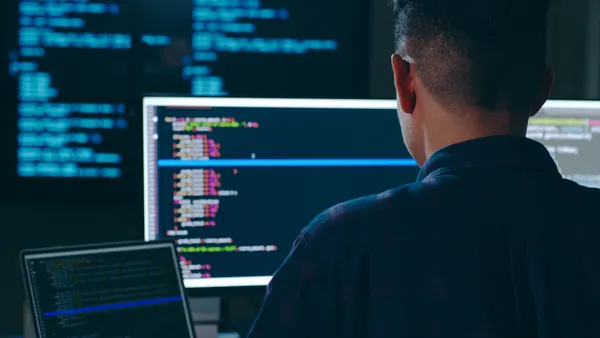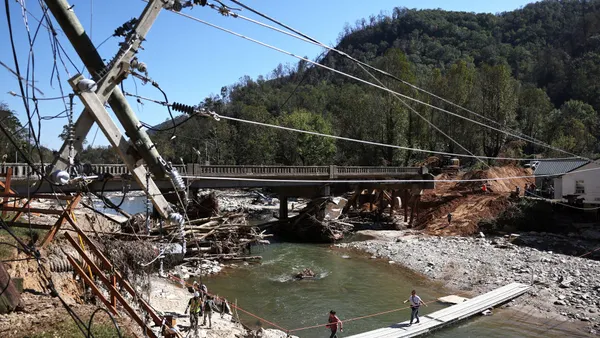Rahul Shah is a global director at London-based British Standards Institution, the national standards body of the United Kingdom.
Opinions are the author’s own.
Seeking answers on how to construct smarter and greener buildings or improve water efficiency in homes and offices, those who create our buildings and construction projects have the opportunity to enter a new era of learning by turning their attention to the benefits of artificial intelligence.
The possible applications of AI for the construction industry could be transformative — spanning everything from design to procurement, construction, operation and decommissioning. In fact, designers and contractors are already applying AI and machine learning to manage the volumes of data involved in the design of buildings, the planning of construction projects and the day-to-day operations of sites.

But this new era of efficiency could mean a new era of learning and development for workers in the construction industry as they adapt ahead of changing responsibilities. Given the workforce challenges construction leaders face due to labor shortages and aging employees, a critical window of opportunity is emerging for businesses to embrace AI and prepare the next generation of people to work alongside this transformative technology.
Practical uses
Before assessing why employees should become more familiar with AI, it’s worthwhile to examine why the technology is quickly becoming essential in construction in the first place.
According to BSI’s recent Trust in AI Poll, a global survey with more than 10,000 respondents across nine countries, 45% of people working in the built environment sector globally say their job currently uses AI. Of those who say it doesn’t yet, 42% expect it to by 2030, and 68% expect the sector overall will.
It’s clear there are many opportunities to use AI in the sector. For example, AI’s ability to rapidly assess and synthesize information, in volume and at scale, offers the potential to proactively create more efficient buildings — both in terms of energy and use. In one pilot scheme in Sweden, using AI to manage energy consumption in a building has led to it being reduced by about 20%.
Experts also believe AI could have a positive impact, for example, by assisting in monitoring safety via sensors, cameras, predictive trend data and modeling to determine ways to make construction work zones safer and more efficient.
In addition, AI-powered tools like drones are starting to be used to assist in managing large and high construction zones. Being able to view these complicated zones from multiple vantage points could potentially allow for increased safety by alerting workers to any risks that cannot be seen from their view. These drones may also be capable of identifying design weaknesses before they emerge.
Just as the introduction of CAD has been transformative of the practice of building design, the use of AI tools could transform our built environment from start to finish.
Education is key
Younger generations of workers may be coming out of school with some comfort with, and knowledge of, AI, but too few of those workers are entering the construction field. According to a 2021 report, only 16.7% of Gen Z students said they’d be interested in working in construction someday, making it the 21st-ranked field of 22 surveyed — far behind trendy industries like the arts at 78% and technology at 76.5%. Given this reality, and as the industry works to recruit more effectively from the younger ranks, upskilling and reskilling existing workers is pivotal.
Certainly, construction industry leaders can conduct AI training and upskilling through the tried-and-true learning and development modules they use today. However, an innovative new education strategy may be worth implementing in addition to traditional methods: reverse mentoring. Younger workers may lack sector knowledge and experience, but their familiarity with AI tools can be essential to upskilling experienced construction workers.
In the AI era, younger Millennial and Gen Z professionals have the potential to add value from day one by training senior leaders about AI and technology, while absorbing some of their experienced colleagues’ expansive knowledge about their industry.
Establishing this kind of culture in AI education could create a two-way organizational knowledge flow that not only enhances operational efficiencies by helping older workers use AI-enabled software and processes as part of their job functions, but also establishes team trust and collaborative ideation in an age-diverse workforce.
Ultimately, education has a key role to play in ensuring the construction workforce can seamlessly integrate AI tools across all stages, from initial design sketches to the finishing touches on a completed facility. While we will always need people at the heart of the construction process, AI's potential to enhance on-site safety, support sustainability and enable a people-centric approach can position it at the forefront of positive change in the built environment.














